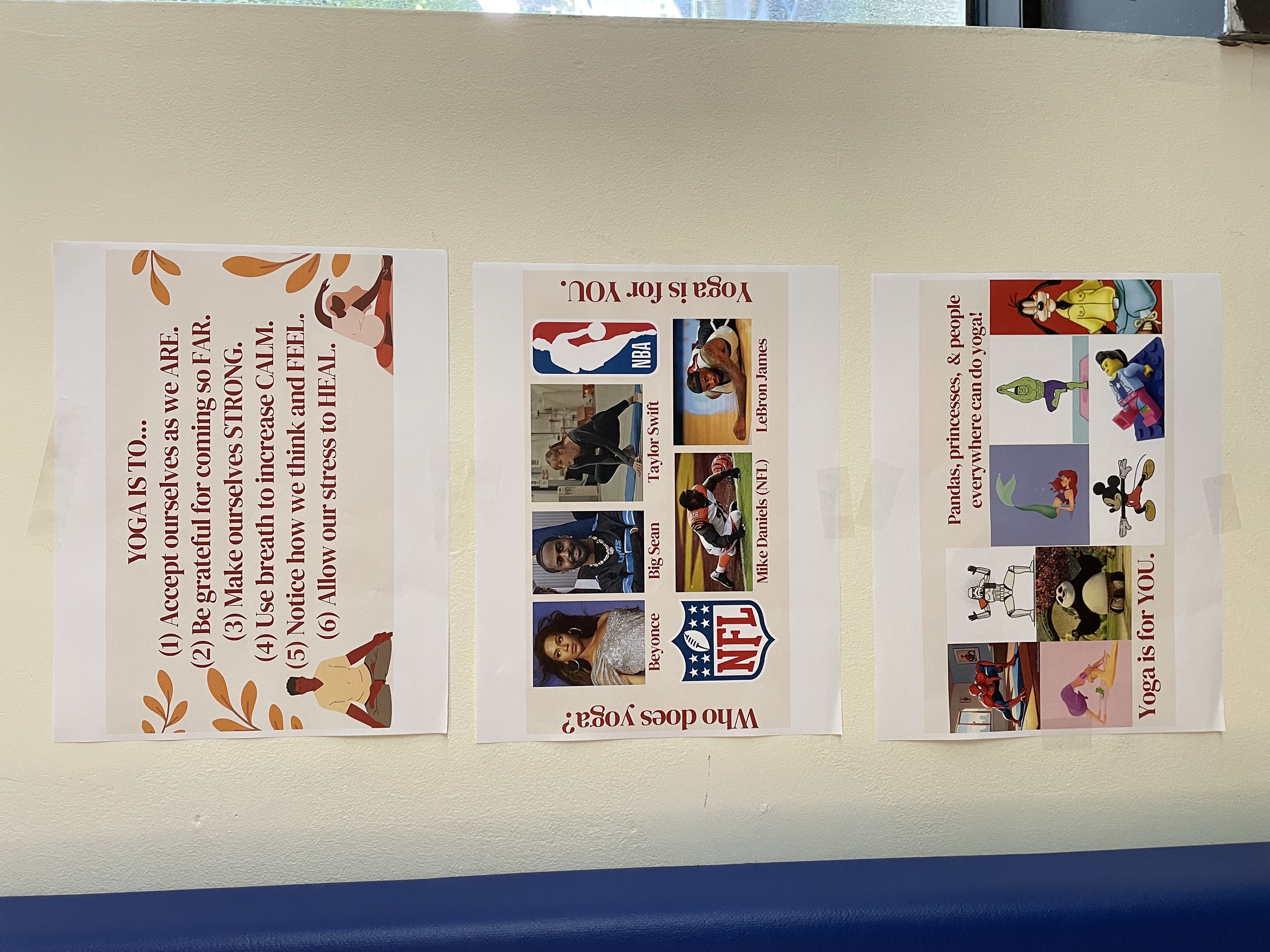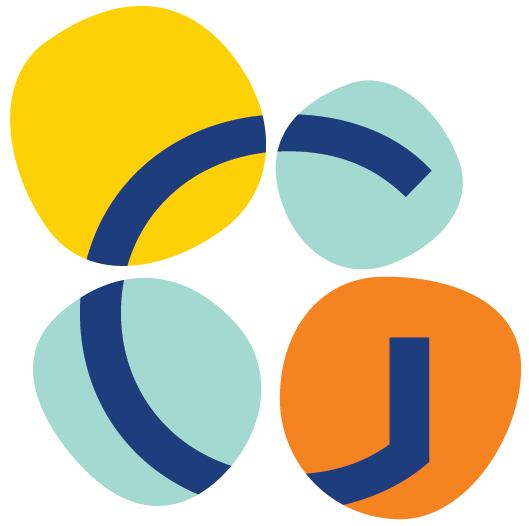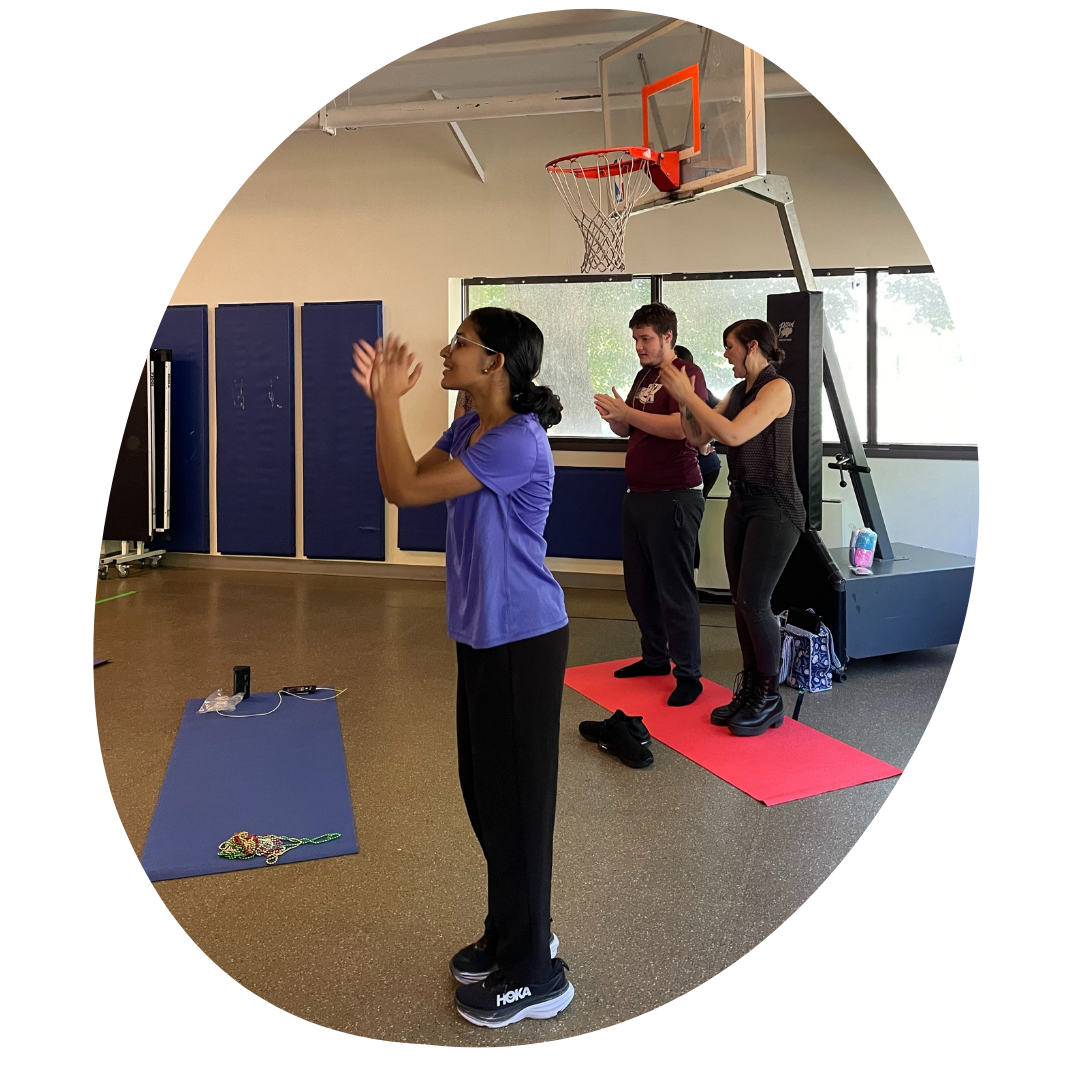What do Taylor Swift, Beyonce, Big Sean, Mike Daniels, and LeBron James have in common? They all do yoga.

The practice can be a useful tool for both physical and mental health because of the way it combines movement with mindfulness practices. For individuals with intellectual and developmental disabilities (IDD), yoga can be a way to enhance motor skills, balance, flexibility, and strength. Other outcomes include decreased stress, increased attention, improved social communication, and refined imitation skills.
The American Academy of Pediatrics has found that yoga and other exercise interventions can result in better social responsiveness and decreased irritability, stereotypical behavior, and hyperactivity.
In June, Akila Muthukumar visited The Guild School to host short adaptive classes. Students rotated through the gym to participate in a few minutes each of guided stretching, yoga, simple dance steps, and a brief meditation exercise. Akila is a Visiting Fellow from Harvard Medical School with a particular interest in human development and IDD. She previously worked at a residential school for individuals with IDD in India that incorporated yoga as a regular part of their routine. Because of the history and popularity of yoga in the country, there are more studies available to demonstrate the potential positive outcomes.
“Interestingly, when accessible classes are offered to people with IDDs or other disabilities, there is high recruitment, retention, and participation rates. This suggests that we just need creative, accessible programs whether that involves chair yoga, online versions or augmented reality-enhanced physical activity that is more engaging,” Akila says.
There are a number of approaches she takes to making the yoga routine adaptive so that everyone can participate:
- Learn everyone’s name and do 1:1 introductions
- Ensure everyone is within eyesight of the instructor
- Allow extra time for observation to ensure people can see the poses on the instructor as well as their peers
- Emphasize that everyone doesn’t need to do every move and never force anyone to join
- Adjust the pace: it’s ok to slow down
- Reiterate that yoga will look different on different bodies
- Use plain and accessible language
- Incorporate fun references to shared interests like video games
- Emphasize that yoga can be done in everyday clothes and it doesn’t require matching sets or expensive leggings
- Highlight diverse role models who do yoga (including pop musicians or elite athletes)
Adding other elements like dance or meditation can be useful depending on the group. Some individuals may need a movement break to get their energy out while others may be ready for meditation right after yoga. Dance has particular benefits for individuals with IDD, who tend to have lower levels of physical activity than the general population. Akila lead The Guild School students in a few choreographed steps and gave them the opportunity to freestyle, which resulted in some pretty interesting moves!
Each one of these activities can be built into existing routines or used as the foundation to create new habits. They offer flexibility and are adaptable, meaning they have something to offer for everyone. Yoga has always been a practice with many variations on poses to accommodate different abilities. With a creative and inclusive approach, yoga, meditation, and dance can all be used to meet each person where they’re at.
If you or your child are interested in a yoga-based therapy program for your teen aged 12-18, a team of researchers at Harvard want your input on a yoga class they are designing! You will be paid $50 to spend about 1 hour chatting about how yoga and group therapy can be used to help teens manage stress or sad mood. The research team will then use your feedback to develop yoga programs that are attractive and available to all teens. Later, they will invite teens to come back to the free yoga class they helped design!
Link: tinyurl.com/yoga324


